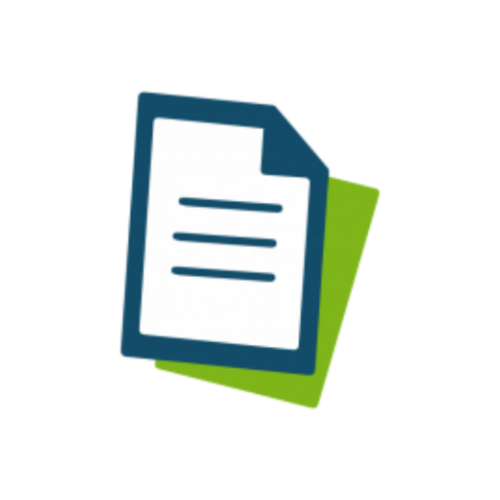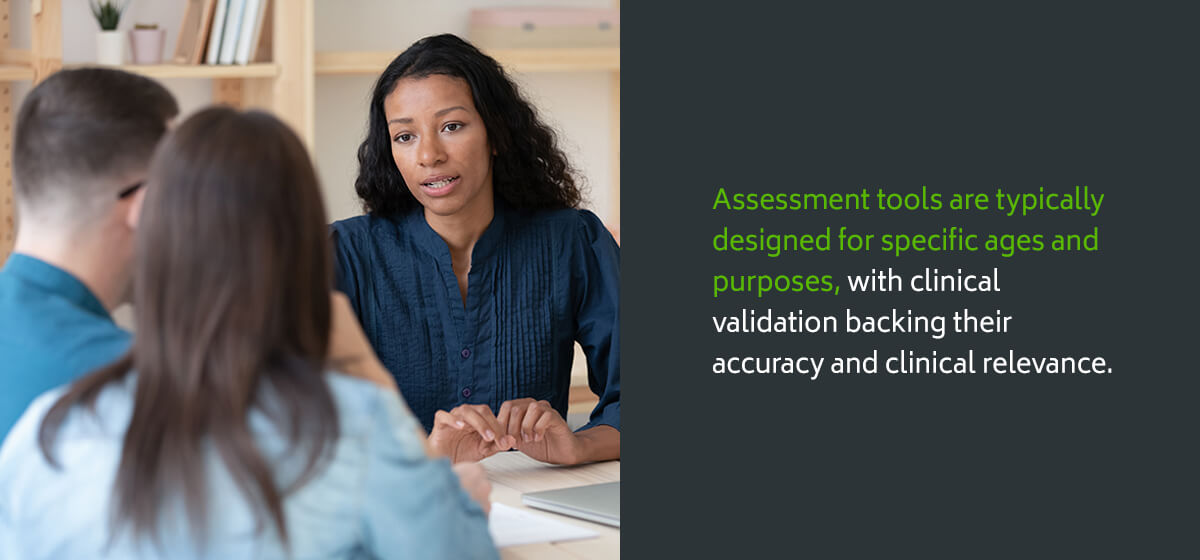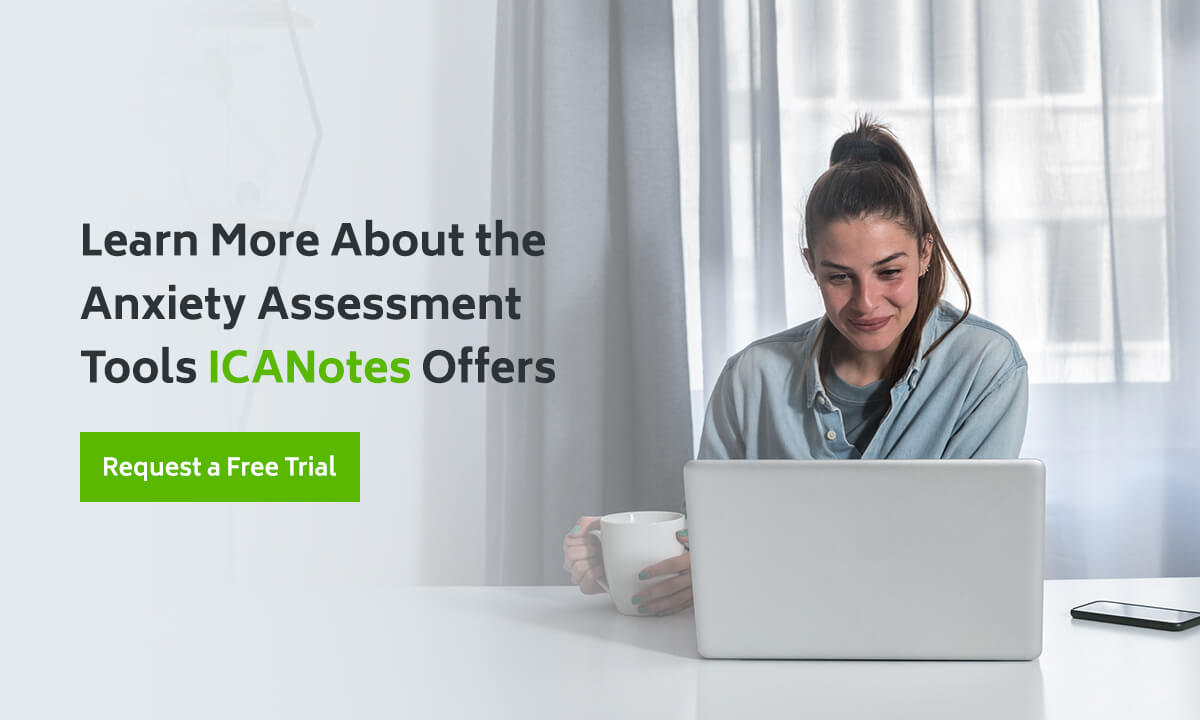Blog > Treatment Strategies > Top Anxiety Assessment Tools for Clinicians: GAD-7, BAI, & More
Top Anxiety Assessment Tools Used by Mental Health Professionals
Anxiety affects millions of individuals, making accurate assessment essential for diagnosis and treatment planning. Mental health professionals rely on anxiety assessment tools—such as the GAD-7, Beck Anxiety Inventory (BAI), and Hamilton Anxiety Rating Scale (HAM-A)—to screen, diagnose, and monitor anxiety symptoms. In this guide, you'll discover the top anxiety screening tools used in clinical practice, how they work, and why they’re critical for delivering effective mental health care.

Last Updated: August 8, 2025


What You'll Learn
-
-
Which anxiety assessment tools—like the GAD-7, BAI, and HAM‑A—are most effective in clinical settings.
-
How to choose the right anxiety scale, considering factors such as patient age, cultural adaptation, cost, and clinical context.
-
Best practices for administering, tracking, and documenting anxiety assessments—including intake timing and combining with interviews.
-
How ICANotes enhances anxiety assessment workflows, from built-in templates to score tracking and streamlined EHR integration.
-
Contents
Signs, Symptoms, and Effects of Anxiety
Anxiety is a broad disorder with different types and presentations, and it can affect one's emotions, cognitive functioning, behavior, and physical health. It shows up in children and adults and often overlaps with other disorders, which can make it hard to identify.
Adults can express their feelings and, thanks to their fully developed brains, can better identify when their thoughts might be irrational or exaggerated. Children, however, may not be able to recognize or vocalize their feelings.
Along with unique presentations for adults and children, anxiety is also comorbid and has overlapping symptoms with many other conditions. For instance, depression can come with irritability, sleep disturbances, fatigue, and other symptoms also associated with anxiety. Clinicians may also struggle to separate disordered anxiety from healthy, everyday anxieties. Anxiety assessment tools are helpful for identifying and differentiating between anxiety disorders and other disorders.
Signs and Symptoms of Anxiety
Anxiety can include everything from an acute fear of spiders to generalized anxiety disorder (GAD), which is persistent and ongoing. Presentation can vary among different types of anxiety, but some common signs and symptoms include:
- Hard-to-control worrying or fear
- Difficulty concentrating
- Restlessness or an inability to relax
- Irritability
- Rapid breathing
- An impending sense of danger or doom
- Avoidance of certain situations or events
- Social isolation or being withdrawn
- Poor sleep or trouble falling asleep
- Sweating, shakiness, or fatigue
- Distractibility
- Digestive issues
- Panic attacks
- Aches and pains
While older texts include them, the latest revision of the Diagnostic and Statistical Manual of Mental Disorders (DSM-5) no longer cites obsessive-compulsive disorder (OCD) and post-traumatic stress disorder (PTSD) as anxiety disorders.
Effects of Anxiety
Anxiety can greatly impact a patient's ability to function in everyday life. The symptoms listed above can be frustrating enough, causing stress and sadness, but they can seep into other aspects of the patient's life, like their education, work performance, relationships, and social activities.
Adults may begin to seek help when they notice these feelings, but teens and children may not be able to identify when they need help. Parents, teachers, and counselors might look for the symptoms listed above and pay close attention to behavioral changes, such as refusing to go to school, increased crying, or trouble in class.
Anxiety assessment tools play an important role in identifying and verbalizing feelings for patients of all ages.
What are Anxiety Assessment Tools?
Anxiety assessment tools are standardized questionnaires or evidence-based screening instruments used by clinicians to evaluate the presence, severity, and type of anxiety disorders. These tools improve diagnostic accuracy by providing measurable indicators of anxiety symptoms and ensuring consistency in evaluation.
Mental health professionals use a variety of anxiety questionnaires and anxiety scales depending on client demographics, clinical settings, and presenting concerns.
To assess anxiety, the clinician conducts a comprehensive evaluation of the client. Throughout the process, providers look for signs and symptoms, as well as risk factors and potential comorbidities. Assessment tools for anxiety are typically designed for specific ages and purposes, with clinical validation backing their accuracy and clinical relevance. For instance, within a behavioral disorder, you might find tools to evaluate the type or severity. If a provider suspects a condition, they can deliver an assessment tool to collect more data and inform their intervention plans or diagnosis.
Anxiety assessment tools often come in one of the following formats:
- Rating scales: A patient might rate the severity or frequency of a symptom on a 1 to 10 scale.
- Checklists: The patient can check off symptoms or prompts that apply to them.
- Questionnaires: Questions or open-ended prompts can provide more detail on specific topics.
Since anxiety comes from many different places and has an array of related effects, assessments may cover the patient's:
- Home environment
- Education and/or employment
- Hobbies and activites
- Drugs or alcohol
- Risk-taking or conduct issues
- Relationships and sexuality
- Feelings of anxiety, depression, anger, etc.
- Suicide risk

Why Use Assessment Tools for Anxiety?
Clinicians rely on structured assessments for more than just diagnosis. The best anxiety assessment tools offer high reliability, validity, and clinical utility, meaning they produce consistent results and are useful in guiding treatment decisions.
-
Reliability ensures the test yields consistent results over time.
-
Validity confirms the tool accurately measures anxiety. Assessment tools typically go through rigorous validation processes, so you can use them and view the results with much more confidence than, say, a personal interpretation of an informal interview.
-
Clinical utility means the tool helps shape treatment planning and client outcomes. These tools can turn nebulous thoughts into concrete numbers, simplifying the diagnostic process.
Assessment tools for anxiety can collect data from many different angles to give clinicians a better view of the whole picture. The test results also provide information about the patient's condition that all clinicians can understand. Most assessment tools are easy to administer and can be reused over and over, making them a great way to get quick insights into a patient's progress.
Commonly Used Anxiety Screening Tools
Below are several widely used assessment tools for anxiety in clinical practice:
Generalized Anxiety Disorder Scale (GAD-7)
This self-report questionnaire has seven questions that ask the patient to rate the frequency of anxiety behaviors on a 3-point scale. It uses scores of 5, 10, and 15 to indicate mild, moderate, and severe anxiety, respectively. This assessment tool for generalized anxiety disorder is great for quick screening and ongoing progress measurements.
- Scoring: 0–21; scores ≥10 suggest probable GAD
- Strengths: Brief, highly validated, self-administered
Beck Anxiety Inventory (BAI)
This self-report questionnaire has 21 questions that describe common anxiety symptoms and ask the patient to rate how much they've been bothered by each symptom over the past week using a 0-3 scale. This assessment tool helps differentiate anxiety from depression by focusing primarily on somatic and cognitive symptoms of anxiety.
- Scoring: 0–63; higher scores indicate more severe anxiety
- Strengths: Differentiates anxiety from depression
Hamilton Anxiety Rating Scale (HAM-A)
HAM-A has a similar structure to GAD-7, with 14 items in a self-report questionnaire. The patient answers them on a 4-point scale. Unlike GAD-7, HAM-A measures anxiety globally, rather than solely GAD.
- Scoring: 0–63; higher scores indicate more severe anxiety
- Strengths: Differentiates anxiety from depression
How Clinicians Choose the Right Anxiety Scales
When selecting anxiety scales, mental health professionals take several factors into account to ensure the tool is appropriate for their clinical setting and client population. These considerations include the target population (such as children, adults, or older adults), the time required to administer the tool, and whether the instrument is free or proprietary. Clinicians also assess whether the scale has been adapted for cultural and language relevance and whether it fits the context in which care is delivered, such as telehealth, primary care, or traditional therapy settings.
Use the table below to compare adult and pediatric anxiety measures, then follow the if/then guide to pick the best tool for your setting.
| Tool | Format & Length | Primary Focus | Age Range | Strengths | Limitations |
|---|---|---|---|---|---|
| Beck Anxiety Inventory (BAI) | 21 self-report items | Somatic & cognitive anxiety symptoms | Adolescents & adults | Quick to complete; good for tracking symptom severity over time | Less effective at differentiating anxiety subtypes |
| GAD-7 (Generalized Anxiety Disorder-7) | 7 self-report items | Core symptoms of generalized anxiety disorder | Adolescents & adults | Very brief; widely validated; excellent for screening | Focused mainly on GAD—may miss other anxiety disorders |
| HAM-A (Hamilton Anxiety Rating Scale) | 14 clinician-rated items | Psychic & somatic anxiety symptoms | Adults | Long-standing clinical use; covers psychological & physical symptoms | Requires clinician administration; more subjective |
| SCARED (Screen for Child Anxiety Related Emotional Disorders) | 41 self-report items (child & parent versions) | Multiple anxiety disorders (GAD, social anxiety, separation anxiety, etc.) | Children & adolescents | Comprehensive; covers multiple anxiety types | Longer to administer; best for pediatric use |
| STAI (State–Trait Anxiety Inventory) | 40 self-report items | Differentiates temporary “state” anxiety from general “trait” anxiety | Adults (adaptations for youth exist) | Useful for research; distinguishes acute vs. chronic anxiety | Longer; not disorder-specific |
| Zung Self-Rating Anxiety Scale (SAS) | 20 self-report items | Anxiety symptoms (emphasis on somatic) | Adolescents & adults | Simple scoring; useful for large-scale screening | Less sensitive to mild anxiety; older norms |
| DASS-21 (Depression Anxiety Stress Scales – Short Form) | 21 self-report items (7 per scale) | Depression, anxiety, and stress | Adults (16+) | Measures three related constructs in one tool; efficient | Not diagnostic; anxiety scale less detailed than BAI or HAM-A |
| RCADS (Revised Children’s Anxiety and Depression Scale) | 47 self-report items (child & parent versions) | Multiple anxiety disorders + depression (DSM-aligned subscales) | Children & adolescents | DSM-aligned subscales; detailed profiles | Lengthy; may be too detailed for quick screening |
How to use the following Anxiety Assessment Tool Decision Guide:
-
Start at the top and answer each question in sequence.
-
Follow the Yes column to find the best tool for that scenario.
-
If No, move to the next decision point until you find a match.
| Decision Point | Yes → Tool(s) | No → Next Step |
|---|---|---|
| Is your client a child or adolescent? | SCARED or RCADS | Go to next row |
| Do you want to briefly screen for generalized anxiety? | GAD-7 | Go to next row |
| Do you need to assess physical symptoms of anxiety? | BAI | Go to next row |
| Do you prefer a clinician-rated tool? | HAM-A | DASS-21 |
Using Anxiety Questionnaires in Treatment Planning
Once completed, anxiety questionnaires provide valuable data that can be directly applied to treatment planning. Clinicians use the results to track a client’s progress over time, adjust therapeutic interventions based on symptom severity, and communicate clinical findings to payers when necessary. These tools also support evidence-based documentation, which is essential during utilization reviews and for justifying the medical necessity of ongoing care.
Best Practices for Using Anxiety Assessment Tools
To maximize the effectiveness of anxiety assessment tools, clinicians should administer them during the intake process and at regular intervals throughout treatment. Combining these tools with clinical interviews enhances diagnostic accuracy and provides a more comprehensive understanding of the client’s symptoms. It’s also important to document assessment scores in the EHR to maintain accurate records and support continuity of care. Sharing results with clients can foster insight, encourage collaboration, and strengthen the therapeutic alliance.
Frequently Asked Questions
Final Thoughts on Anxiety Assessment and How ICANotes Can Help
Anxiety assessment tools are indispensable for diagnosing, monitoring, and treating anxiety disorders. Tools like the GAD-7, BAI, and HAM-A are trusted by mental health professionals for their proven reliability, validity, and clinical utility. By integrating these instruments into routine care, clinicians can deliver more accurate and effective treatment to those struggling with anxiety.
ICANotes makes it easy for behavioral health professionals to integrate evidence-based anxiety assessment tools into their documentation workflows. Clinicians can access built-in templates for commonly used instruments like the GAD-7, PHQ-9, and other standardized screening tools. These templates ensure that assessment data is captured in a structured, compliant format that aligns with payer requirements and supports clinical decision-making. Scores are automatically pushed into the patient's chart and can be easily tracked over time within the EHR, helping providers measure symptom progression, justify medical necessity, and adjust treatment plans as needed. With ICANotes, anxiety assessments become a seamless part of high-quality, efficient mental health care.
Register for a free trial or book a demo today to learn more about anxiety assessment workflows in ICANotes.
Start Your 30-Day Free Trial
Experience the most intuitive, clinically robust EHR designed for behavioral health professionals, built to streamline documentation, improve compliance, and enhance patient care.
- Complete Notes in Minutes - Purpose-built for behavioral health charting
- Always Audit-Ready – Structured documentation that meets payer requirements
- Keep Your Schedule Full – Automated reminders reduce costly no-shows
- Engage Clients Seamlessly – Secure portal for forms, messages, and payments
- HIPAA-Compliant Telehealth built into your workflow
Complete Notes in Minutes – Purpose-built for behavioral health charting
Always Audit-Ready – Structured documentation that meets payer requirements
Keep Your Schedule Full – Automated reminders reduce costly no-shows
Engage Clients Seamlessly – Secure portal for forms, messages, and payments
HIPAA-Compliant Telehealth built into your workflow
Related Posts
Dr. October Boyles is a behavioral health expert and clinical leader with extensive expertise in nursing, compliance, and healthcare operations. With a Doctor of Nursing Practice (DNP) from Aspen University and advanced degrees in nursing, she specializes in evidence-based practices, EHR optimization, and improving outcomes in behavioral health settings. Dr. Boyles is passionate about empowering clinicians with the tools and strategies needed to deliver high-quality, patient-centered care.









